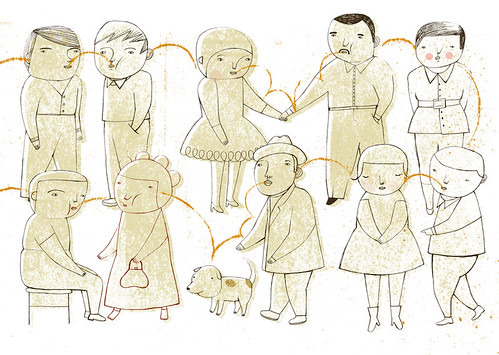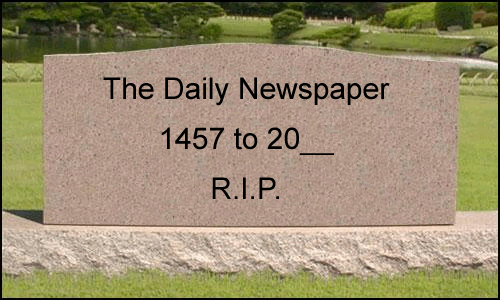 little pop up ads anymore. Advertisers are realizing this. Here’s the good news: they are pulling away from those annoying little ads. Here’s the bad news: now they’re making us advertise for them, and we don’t even realize it.
little pop up ads anymore. Advertisers are realizing this. Here’s the good news: they are pulling away from those annoying little ads. Here’s the bad news: now they’re making us advertise for them, and we don’t even realize it.Companies are now using viral marketing which is becoming a more effective way to advertise a product or idea. Advertisers are done trying to get the word out to everyone at once, they’re finding it more effective to tell a few people about an idea and step back to let it spread. If a few people tell their friends, and those people tell their friends, and those people tell their friends, this idea has reached hundreds of people.
It may sound as if advertisers aren’t doing their job. Some people might see viral marketing as the easy way out, but it is not as simple as it appears. Companies can’t tell a few people “Go tell your friends to buy Pepsi” and expect it to spread. Viral marketing takes careful planning and creativity. Spreadable ads need to be funny or interesting, something people actually want to look at. Companies also need to carefully plan who to send the information to first. The first group needs to be made up of people who would enjoy it so much they would pass it on to their friends.
Finding the right group
 The first group that will see and potentially spread the ad is important. A Pepsi ad will most likely not be spread if given to a group from Atlanta, Georgia (where the Coca Cola factory is located.) Warner Bros. and Universal Orlando resort knew how to target the message of “The Wizarding World of Harry Potter” an interactive theme park in Orlando devoted to the Harry Potter phenomenon (opening 2010.) Instead of promoting the plans through mainstream media, the two companies decided to use the viral method. The first people to hear about it: Potter fans; seven fans to be exact. Orland Studios selected just seven members from Harry Potter fan sites to leak the news of the upcoming park. Those seven people started a chain that would alert the world of the project. This is a fine example of choosing the right starting audience. If Orlando studios had chosen seven random people from Facebook, the news might not have spread. Since it chose an audience that would be enthusiastic about the plans, the word was spread.
The first group that will see and potentially spread the ad is important. A Pepsi ad will most likely not be spread if given to a group from Atlanta, Georgia (where the Coca Cola factory is located.) Warner Bros. and Universal Orlando resort knew how to target the message of “The Wizarding World of Harry Potter” an interactive theme park in Orlando devoted to the Harry Potter phenomenon (opening 2010.) Instead of promoting the plans through mainstream media, the two companies decided to use the viral method. The first people to hear about it: Potter fans; seven fans to be exact. Orland Studios selected just seven members from Harry Potter fan sites to leak the news of the upcoming park. Those seven people started a chain that would alert the world of the project. This is a fine example of choosing the right starting audience. If Orlando studios had chosen seven random people from Facebook, the news might not have spread. Since it chose an audience that would be enthusiastic about the plans, the word was spread.Making it interesting
Companies are realizing the power of YouTube. Some home-made YouTube videos are more popular and influential than the expensive commercials on T.V. Companies are starting to make their own funny and interesting YouTube videos to promote their products. BlendTec’s internet show “Will it Blend” gained popularity through its interesting videos in which a man uses a blender to destroy common household objects. The videos were funny and people shared it with their friends. But in reality, the YouTube videos they were watching were ads for BlendTec’s new line of blenders.
Other companies will put out an entire website to gain popularity. Burger King made a website that was a man in a chicken suit that could be controlled by the website’s visitor. People were entertained by the site and told their friends about it. This website turned out to be an ad for Burger King’s new chicken sandwich.
Clearly, viral marketing is working. Ordinary people are becoming the advertisers and it’s actually working. Personally, I think it’s a good thing. Consumers are choosing what products should become popular rather than the companies. Nobody is forcing us to pass these ads around. In a way, this gives more power to Gen Y. We’re basically choosing what ads to show the world. So, I guess I’ll join the viral marketing band wagon by passing this along, enjoy:
















 It is a Photoshopped picture of a woman, a computer generated piece of artwork. We know that no real person looks like this. The image is altered. We should think the same things when we see a photo such as this:
It is a Photoshopped picture of a woman, a computer generated piece of artwork. We know that no real person looks like this. The image is altered. We should think the same things when we see a photo such as this:  If you still don’t believe that most models have the same “imperfections” that we do, check out this website:
If you still don’t believe that most models have the same “imperfections” that we do, check out this website: 



 My own contribution: Tennis Ball Fisherman
My own contribution: Tennis Ball Fisherman



















